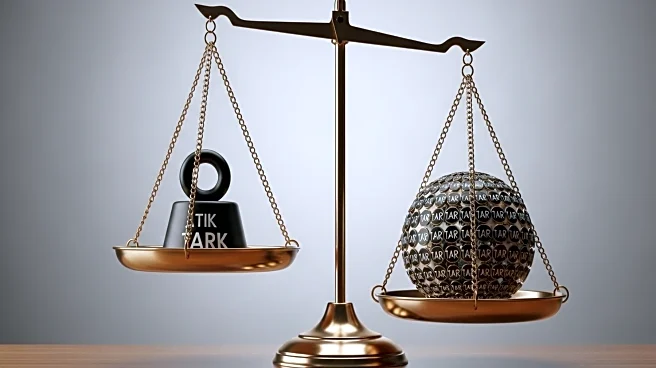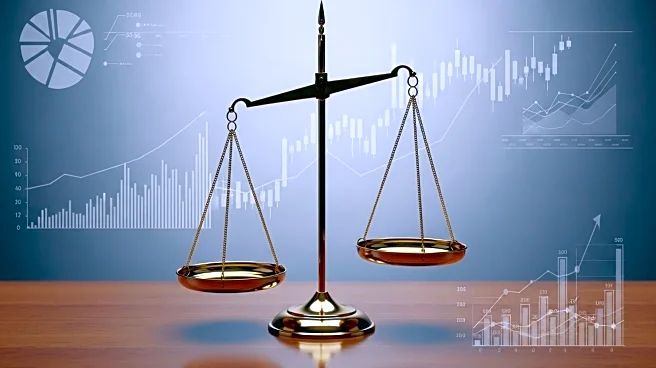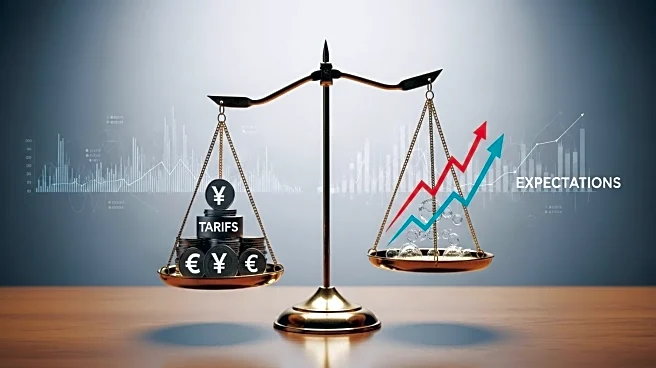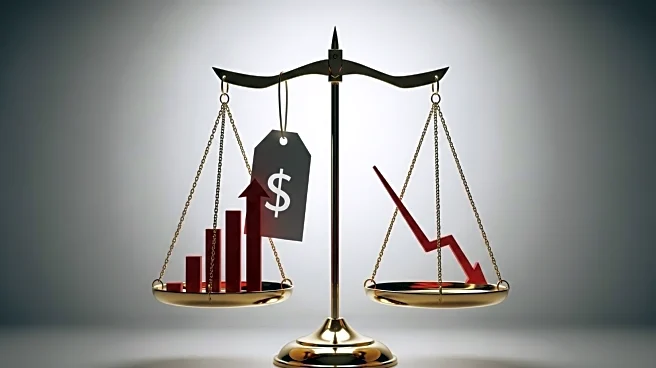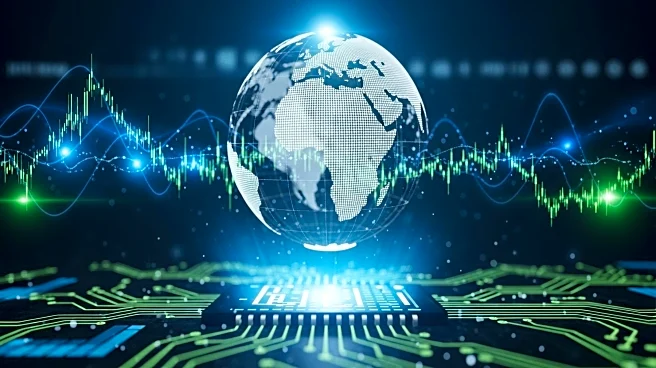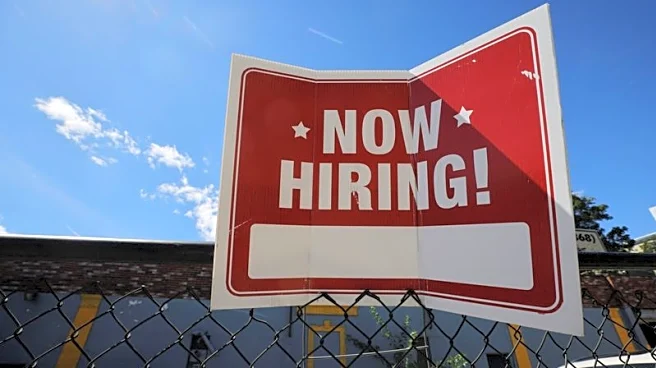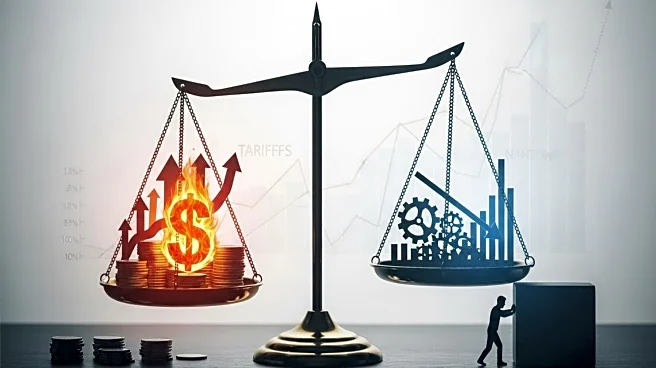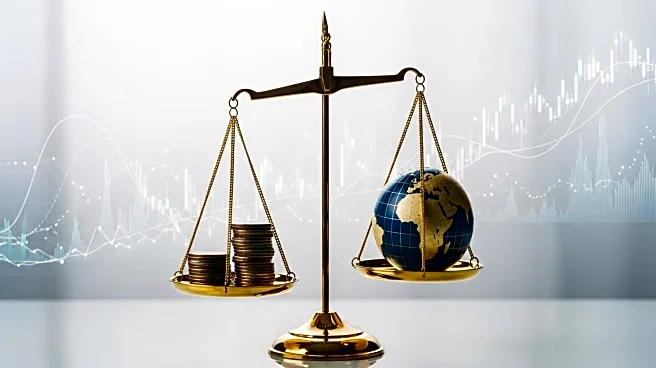What's Happening?
The Federal Reserve is navigating a complex economic landscape in 2025, as core PCE inflation rose to 2.9% in July, marking the highest level since February. This increase, driven by persistent services inflation and tariffs from the Trump administration, complicates the Fed's potential shift towards rate cuts. Despite the inflationary pressures, the labor market's weakness and market expectations have led investors to anticipate a 25-basis-point rate cut at the Fed's September meeting. The tariffs on steel, aluminum, and semiconductors have exacerbated supply chain issues, increasing costs for manufacturers and consumers. These tariffs have led to a 25% rise in construction costs and delays in energy transition projects due to levies on solar and wind components.
Why It's Important?
The situation presents significant implications for the U.S. economy and various sectors. The persistent inflation and tariffs have introduced long-term risks that could affect economic growth and wage levels. The Penn Wharton Budget Model estimates that tariffs may reduce long-run GDP by 6% and wages by 5%. The equity market has responded with caution, as tech stocks, sensitive to interest rate changes, have underperformed. In contrast, sectors like cybersecurity and defense, which are less affected by tariffs, have gained traction. This shift indicates a strategic pivot towards industries with intangible assets and onshoring-driven equities, as seen in Apple's and Johnson & Johnson's recent investments in U.S. manufacturing.
What's Next?
The Federal Reserve's dual mandate of stable prices and maximum employment remains challenged by these dynamics. While weak labor data and recent speeches by Fed officials suggest a tilt towards easing, there is caution against overreacting to labor market weaknesses. The Fed's cautious stance suggests that any rate cuts will be incremental, and equity valuations, particularly in tariff-exposed sectors, will likely remain volatile until the inflation trajectory becomes clearer. The path forward will depend on the Fed's ability to balance its inflation-fighting efforts with the realities of a global economy reshaped by protectionism.
